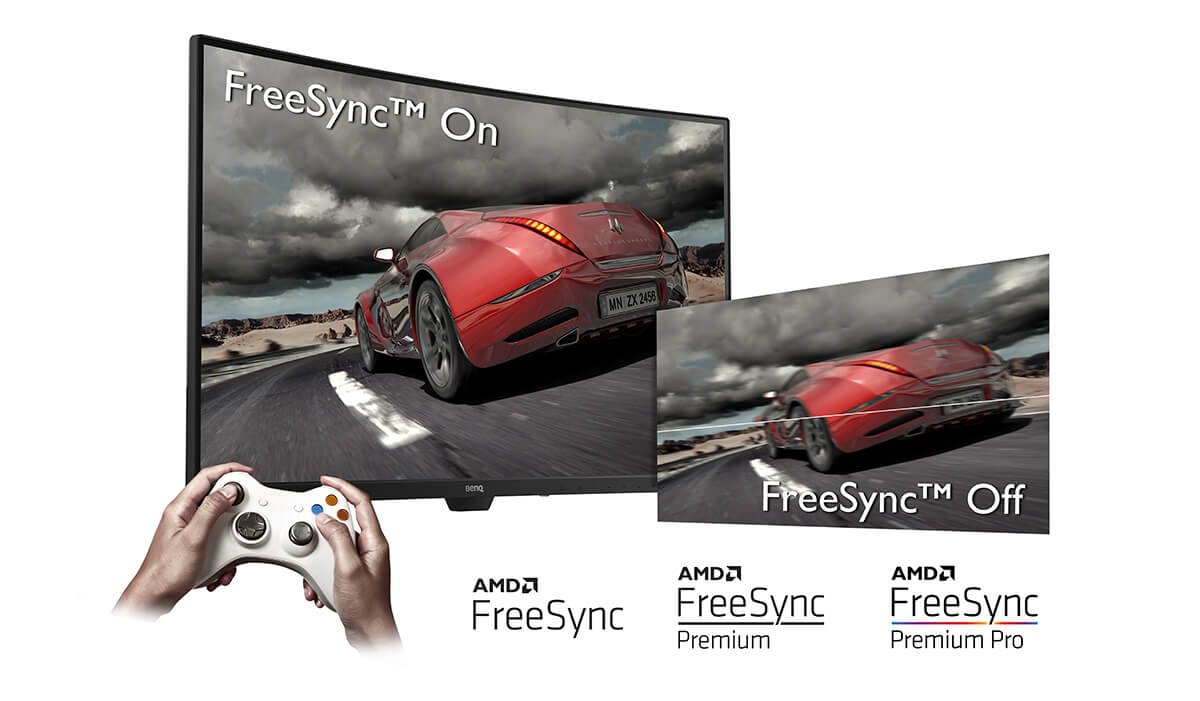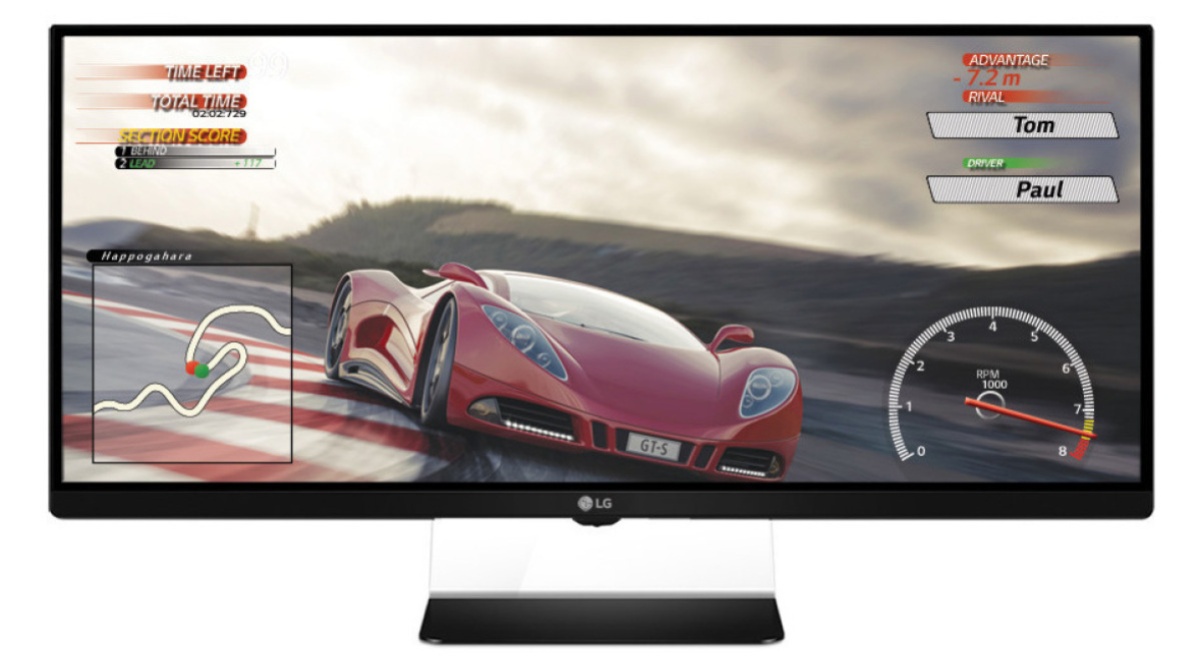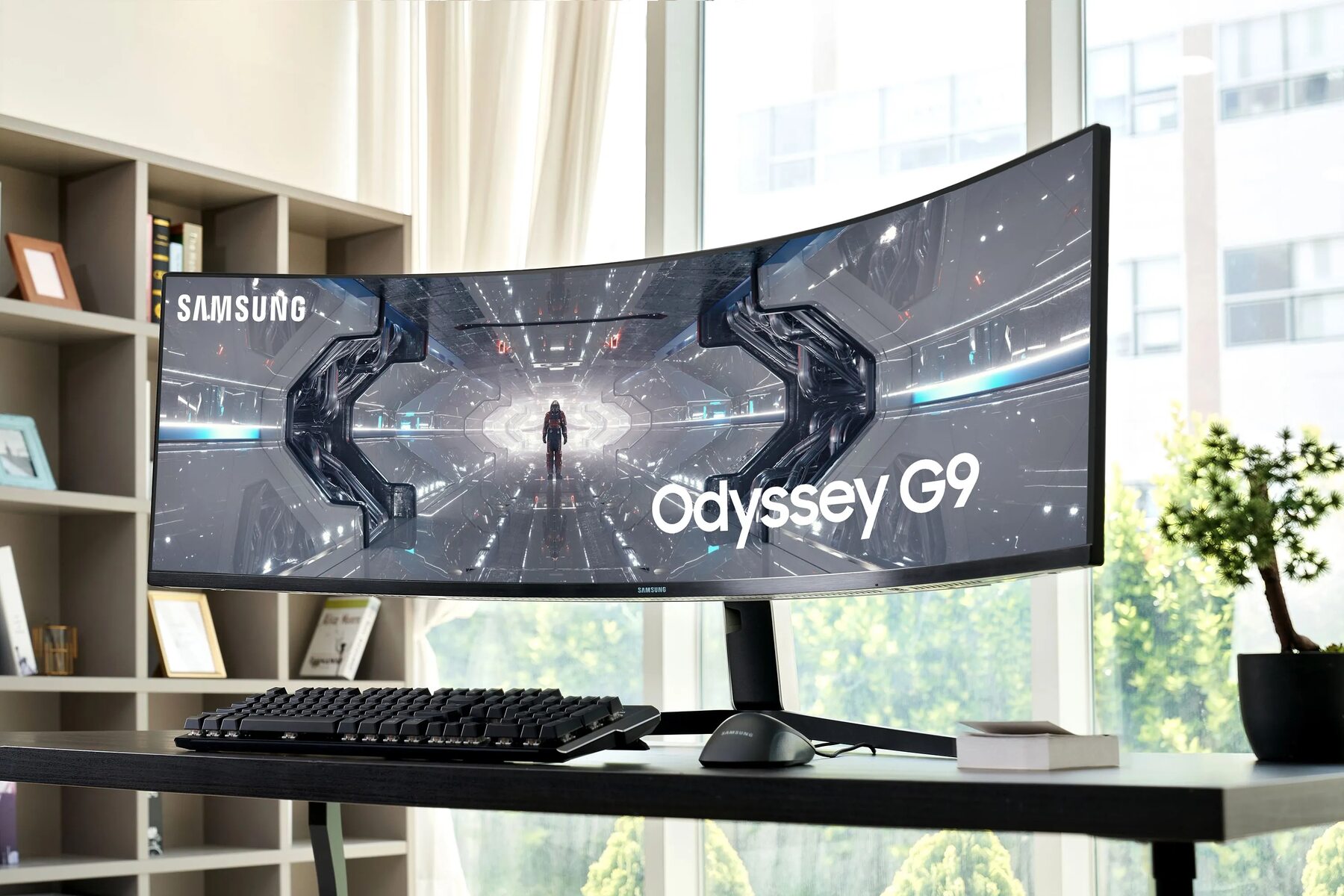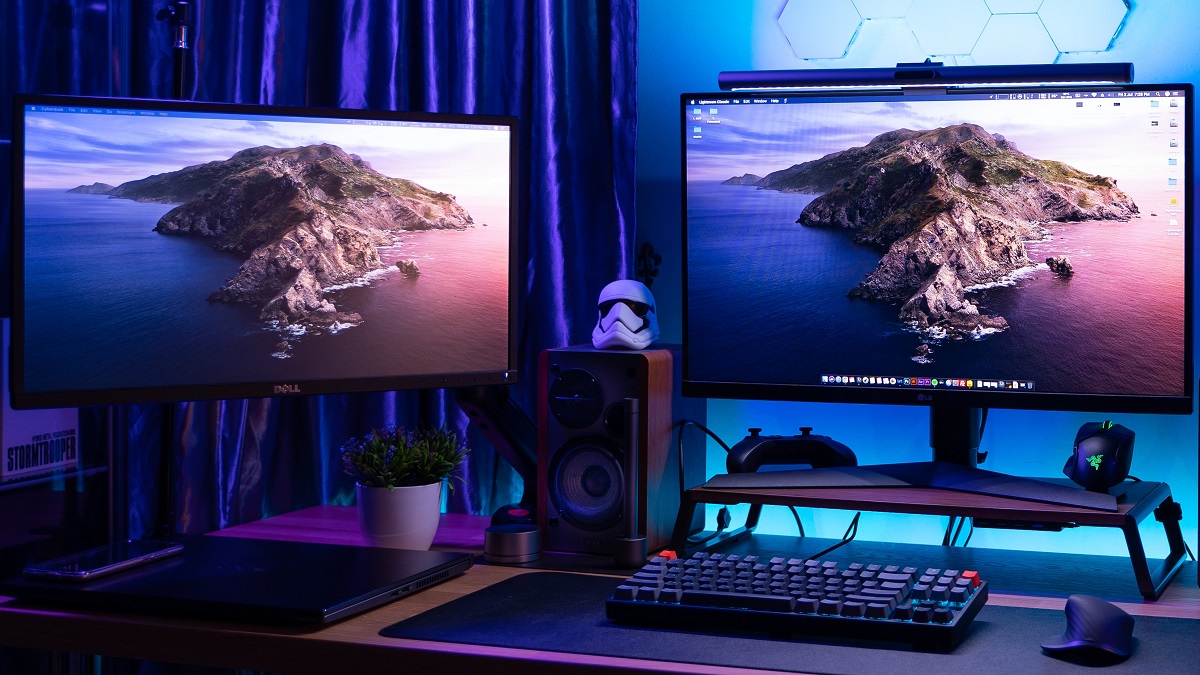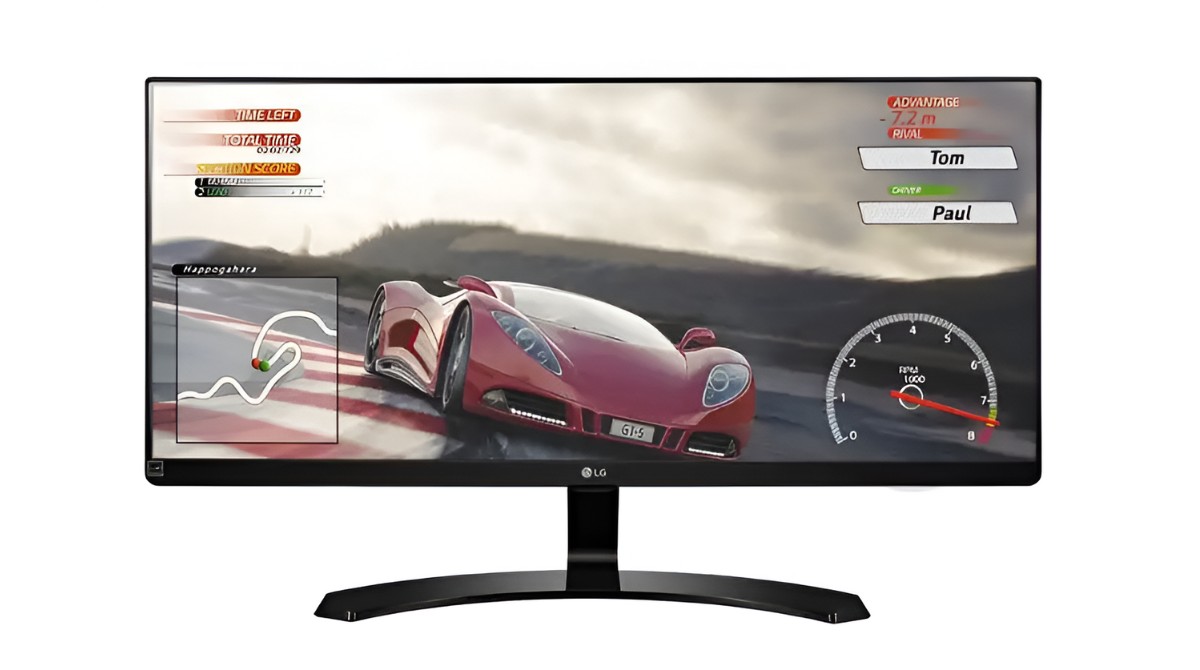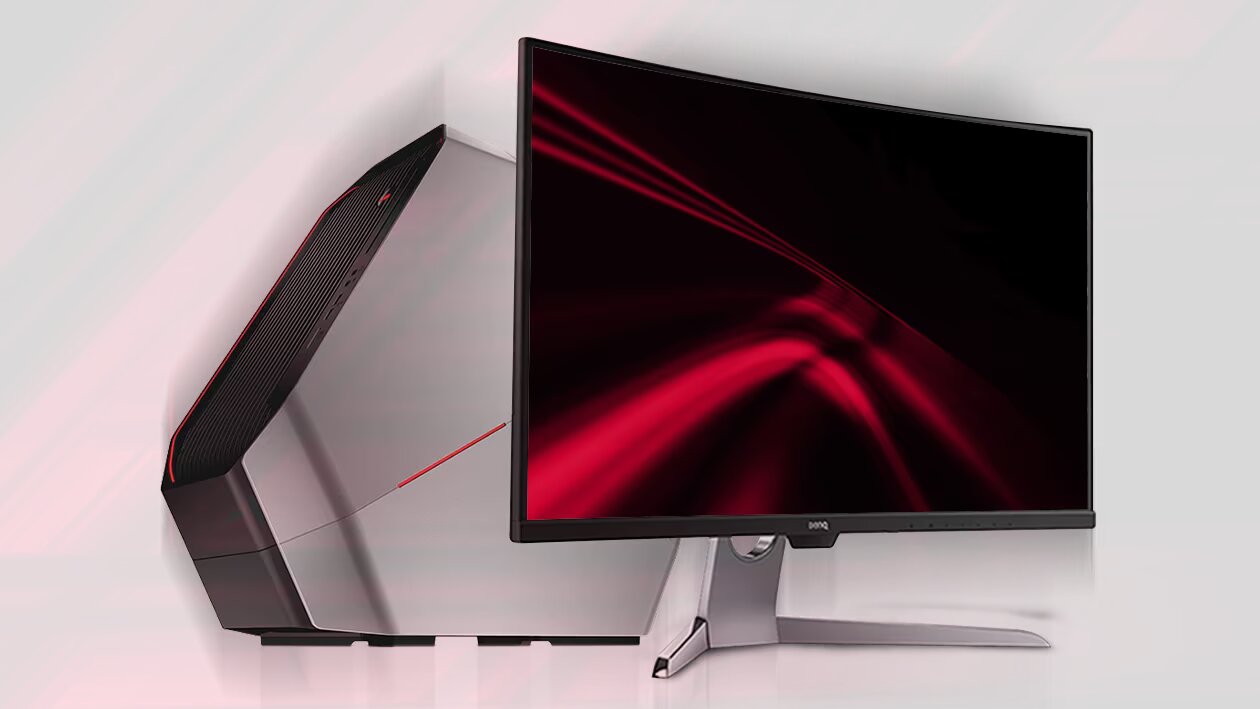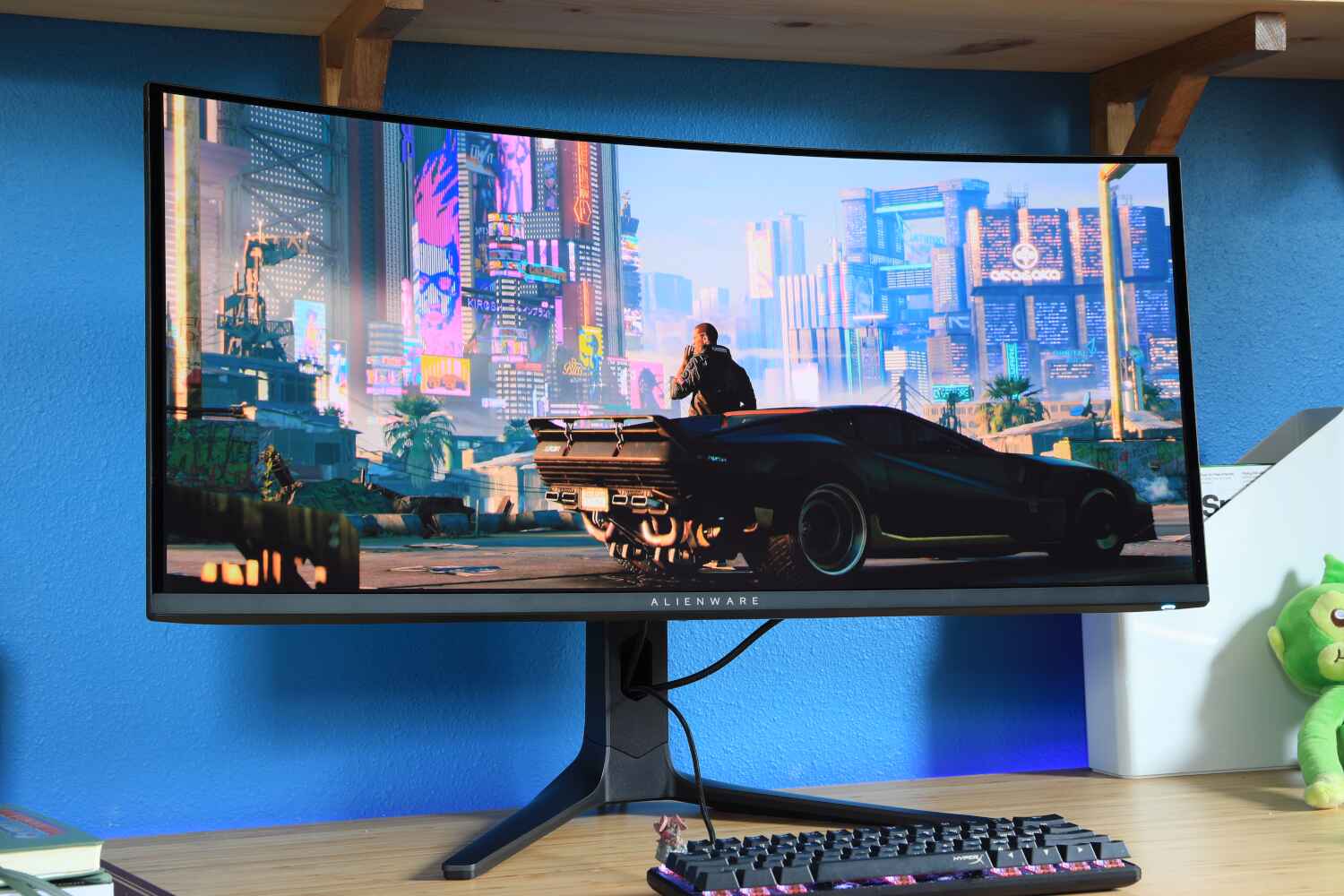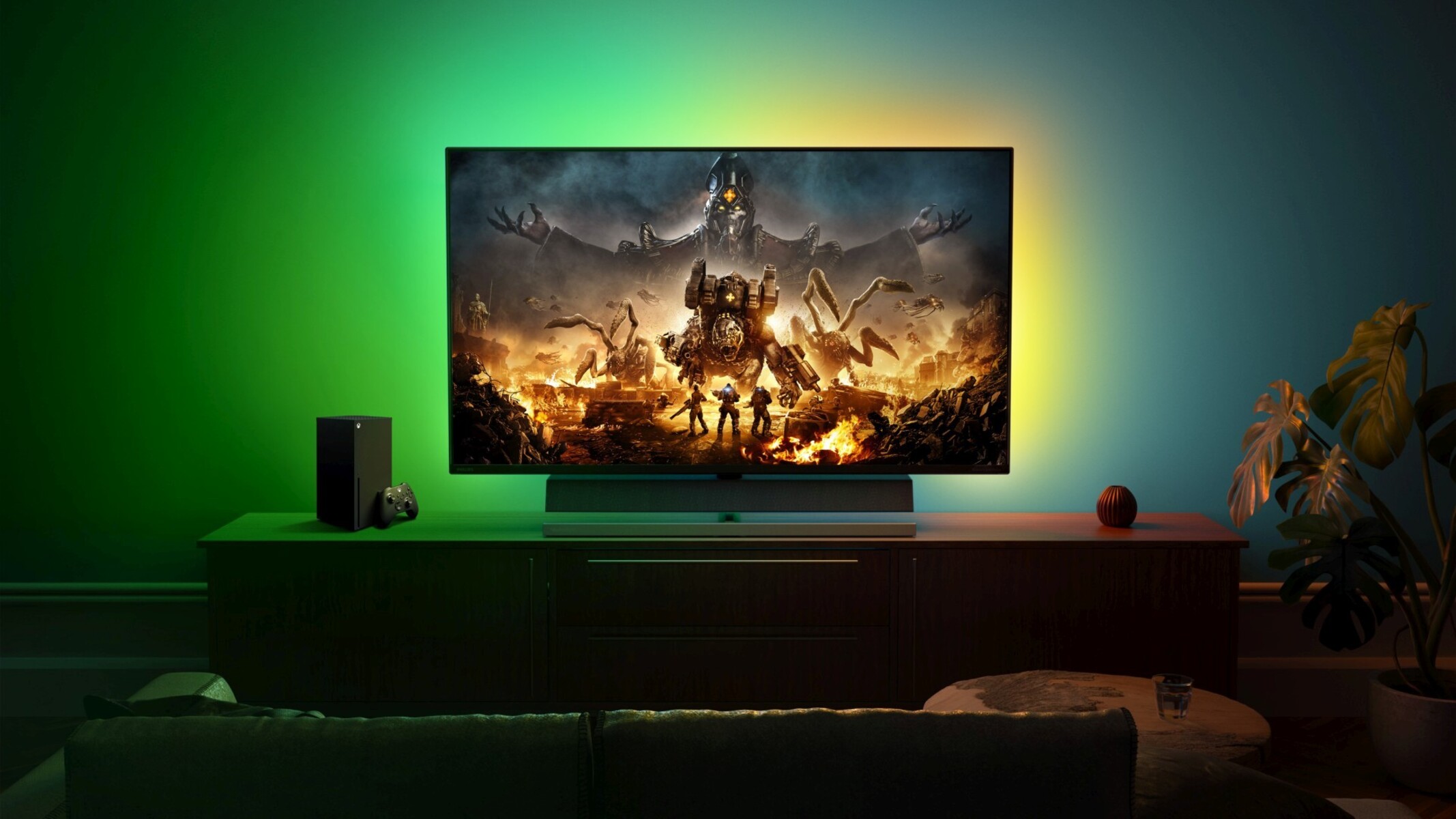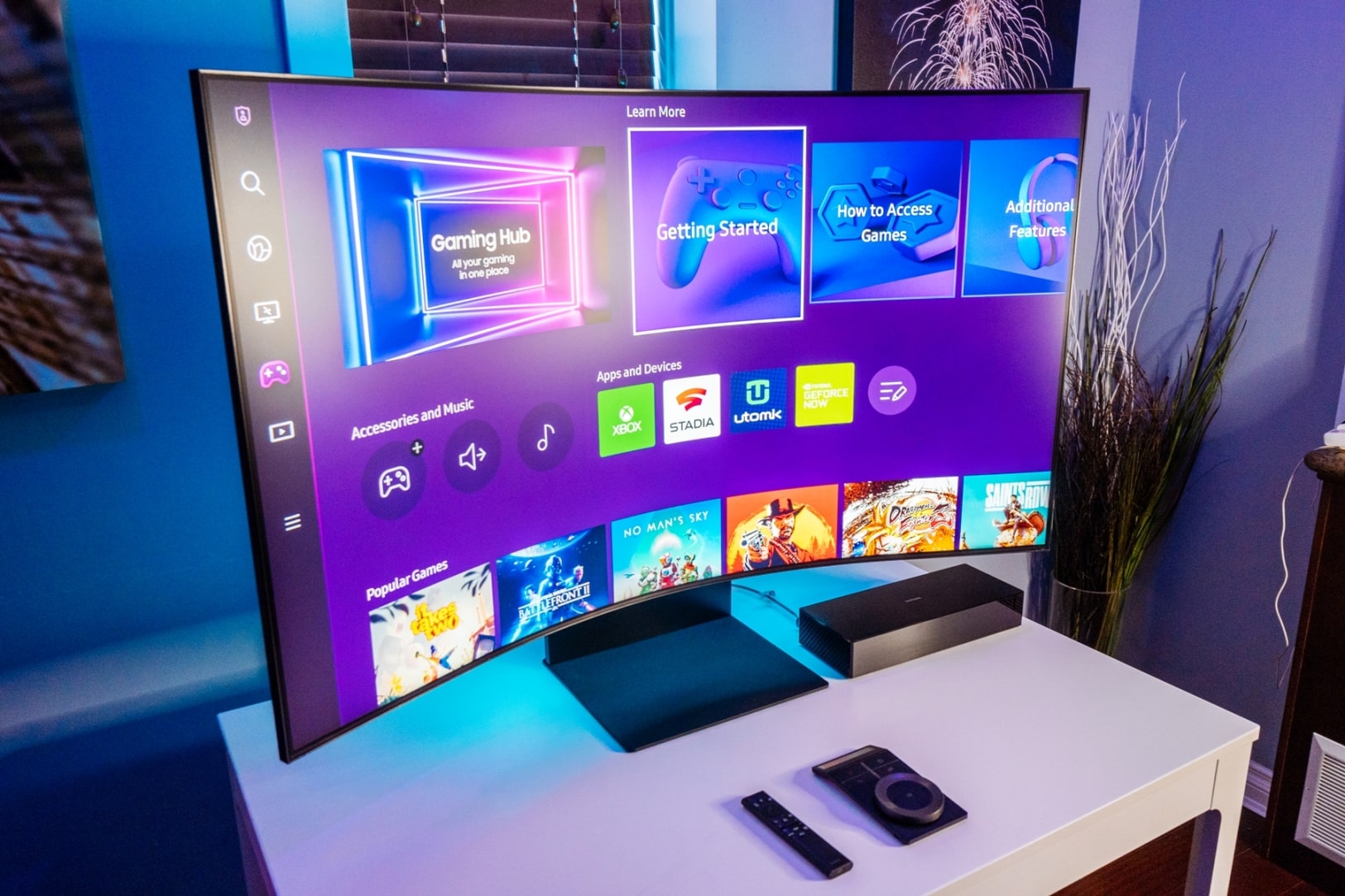Introduction
Welcome to the world of gaming monitors, where every detail matters for an immersive gaming experience. One important aspect that affects the smoothness and fluidity of gameplay is the monitor’s refresh rate. Traditionally, monitors had fixed refresh rates, which could lead to screen tearing and stuttering during fast-paced gaming sessions. However, with the advent of technologies like Freesync, these issues have become a thing of the past.
Freesync is an adaptive sync technology developed by AMD (Advanced Micro Devices) that eliminates screen tearing and stuttering by synchronizing the monitor’s refresh rate with the output of the graphics card. This dynamic refresh rate adjustment ensures a smooth and tear-free gaming experience, even when the frame rate fluctuates.
Introduced in 2014, Freesync was a revolutionary development in the gaming industry. It allowed gamers to enjoy high-quality visuals without the hassles of manually adjusting the refresh rate or investing in expensive hardware. Since its inception, Freesync has gained immense popularity, becoming a standard feature in many gaming monitors across various price ranges.
But how exactly does Freesync work, and why should you consider it when choosing a gaming monitor? In this article, we will uncover the inner workings of Freesync, explore its benefits, and compare it to its main competitor, G-Sync, to help you make an informed decision for your gaming setup. So, if you’re ready to delve into the world of adaptive sync technology, let’s get started!
History of Freesync
The history of Freesync dates back to 2013 when AMD first unveiled its plans to develop an adaptive sync technology as a response to Nvidia’s G-Sync. The idea behind Freesync was to create an open standard that would be compatible with a wide range of monitors and graphics cards.
In 2014, AMD officially launched Freesync as an open standard, allowing monitor manufacturers to implement the technology without any licensing fees. This move was in stark contrast to Nvidia’s G-Sync, which required proprietary hardware module installations and made G-Sync monitors more expensive.
With Freesync, AMD aimed to provide gamers with a more accessible and affordable solution to screen tearing and stuttering. By synchronizing the monitor’s refresh rate with the output of the graphics card, Freesync eliminates the need for vertical sync (V-Sync), which can introduce input lag. This results in a smoother gaming experience without the drawbacks associated with traditional fixed refresh rates.
Over the years, Freesync has continued to evolve. The initial version supported a range of 9Hz to the maximum refresh rate of the monitor, but subsequent updates have expanded this range to 1Hz for low framerate compensation (LFC). LFC ensures that even when the frame rate drops below the monitor’s minimum refresh rate, the display remains fluid and tear-free.
Not only did Freesync gain popularity due to its affordability and open standard, but it also received support from major monitor manufacturers. This led to an increase in the availability of Freesync-compatible monitors with a wide range of specifications and price points.
In 2016, AMD announced an enhanced version of Freesync called Freesync 2. This updated version introduced support for HDR (High Dynamic Range) content, providing gamers with a more vibrant and lifelike visual experience. Freesync 2 also brought improvements in input latency and provided better tone mapping capabilities for HDR content.
Since its inception, Freesync has become a go-to choice for many gamers, offering a cost-effective and versatile adaptive sync solution. Its wide adoption by monitor manufacturers and continuous improvements have cemented its place as a leading competitor in the field of adaptive sync technologies.
How Does Freesync Work?
Understanding how Freesync works requires a basic understanding of how traditional monitors handle refresh rates. In a conventional fixed-refresh-rate monitor, the monitor’s refresh rate remains constant regardless of the frame rate outputted by the graphics card. This can lead to screen tearing and stuttering, especially when the frame rate fluctuates.
Freesync, on the other hand, dynamically adjusts the monitor’s refresh rate to match the output of the graphics card. This synchronization is achieved through the communication between the monitor and the graphics card using the DisplayPort Adaptive Sync standard.
When a game is running, the graphics card constantly delivers frames that are rendered in real-time. Each frame arrives at irregular intervals, as the action on the screen changes. With Freesync, the monitor adapts its refresh rate to match the arrival of these frames. For example, if the graphics card delivers a frame every 10 milliseconds, the monitor’s refresh rate will be set to 100Hz.
If the graphics card output rate exceeds the monitor’s maximum refresh rate, Freesync will not engage, and the monitor will operate at its maximum refresh rate. However, if the graphics card’s output falls below the monitor’s refresh rate range, Freesync kicks in to ensure synchronization. This dynamic adjustment eliminates screen tearing and stuttering, resulting in a smoother and more visually pleasing gaming experience.
It’s important to note that Freesync requires both the monitor and the graphics card to support the technology. While AMD graphics cards are compatible with Freesync by default, not all monitors are Freesync-enabled. It’s essential to check the specifications of your monitor to ensure Freesync compatibility. Additionally, Freesync works best when the frame rate is within the monitor’s supported refresh rate range.
Overall, Freesync provides an intelligent and seamless method for adapting the monitor’s refresh rate to match the graphics card’s output. This synchronization ensures a tear-free and stutter-free gaming experience, enhancing immersion and smoothness in gameplay.
Benefits of Using Freesync
Using Freesync technology offers numerous benefits that contribute to an enhanced gaming experience. Here are some of the key advantages of using Freesync:
- Tear-Free Gameplay: The primary advantage of Freesync is the elimination of screen tearing. Traditionally, when the monitor’s refresh rate does not match the frame rate output by the graphics card, screen tearing occurs, resulting in a disjointed and unappealing visual experience. Freesync synchronizes the refresh rate of the monitor with the output of the graphics card, ensuring tear-free gameplay by eliminating this visual artifact.
- Smooth and Fluid Gaming: By dynamically adjusting the monitor’s refresh rate, Freesync also eliminates stuttering and juddering caused by frame rate fluctuations. This leads to a significantly smoother and more fluid gaming experience, providing an added level of immersion and responsiveness.
- Reduced Input Lag: Freesync technology minimizes input lag compared to traditional V-Sync solutions. V-Sync introduces a delay as it waits for the monitor’s refresh cycle to start, leading to noticeable input lag. With Freesync, no additional buffering is required, resulting in lower input latency and more responsive controls.
- Cost-Effective Solution: Freesync offers a more budget-friendly alternative to Nvidia’s G-Sync technology. As Freesync is an open standard, monitor manufacturers can implement it without paying licensing fees, making Freesync monitors more affordable compared to their G-Sync counterparts.
- Wide Range of Monitor Options: Freesync has gained widespread adoption among monitor manufacturers, ensuring a wide range of options for users. Whether you’re a casual gamer or an avid enthusiast, you’ll find Freesync-compatible monitors in various sizes, resolutions, and refresh rates to suit your preferences and budget.
Overall, Freesync technology offers a host of benefits that contribute to a smoother, tear-free, and more immersive gaming experience. By eliminating screen tearing, reducing stuttering, lowering input lag, and providing a cost-effective solution, Freesync has become a popular choice among gamers seeking optimal visual performance in their gaming setups.
Freesync vs. G-Sync: A Comparison
When it comes to adaptive sync technologies, two main players dominate the market: Freesync and G-Sync. Developed by AMD and Nvidia, respectively, these technologies aim to provide a smoother and more enjoyable gaming experience. Let’s compare Freesync and G-Sync to understand their similarities and differences.
Compatibility: Freesync is an open standard, allowing compatibility with a wide range of monitors and graphics cards. On the other hand, G-Sync is a proprietary technology that requires specific hardware modules to be installed on both the monitor and the graphics card, which limits compatibility to Nvidia graphics cards and G-Sync-enabled monitors.
Cost: One significant difference between Freesync and G-Sync lies in their cost. Freesync monitors are generally more affordable since there are no additional licensing fees associated with the technology. G-Sync monitors, on the other hand, tend to be more expensive due to the proprietary hardware required for implementation.
Performance: In terms of performance, both Freesync and G-Sync provide similar benefits of eliminating screen tearing and reducing stuttering. However, some users claim that G-Sync offers a slightly smoother experience due to its use of dedicated hardware modules.
Refresh Rate Range: One area where Freesync has an advantage is the range of supported refresh rates. Freesync monitors often have a broader range of supported refresh rates, allowing for variable refresh rates even at lower frame rates. G-Sync monitors typically have a narrower range, limiting the effectiveness of variable refresh rates at lower frame rates.
Availability: Freesync has seen widespread adoption by monitor manufacturers, offering a wide variety of options across different price points. G-Sync monitors, though less common, tend to be more prevalent in the high-end market segment. However, over recent years, Nvidia has allowed some monitors to become G-Sync compatible despite not having the proprietary hardware, expanding the availability of G-Sync-like functionality.
Ultimately, the choice between Freesync and G-Sync depends on individual preferences, budget, and existing hardware. Freesync offers a more affordable and versatile solution with greater compatibility, while G-Sync boasts dedicated hardware for potentially smoother performance. Considering factors like cost, performance, refresh rate range, and availability will help you make an informed decision based on your specific requirements and preferences.
How to Enable Freesync on Your Monitor
If you own a Freesync-compatible monitor and graphics card, enabling Freesync is a straightforward process. Here’s a step-by-step guide to help you enable Freesync on your monitor:
- Check Compatibility: Firstly, ensure that both your monitor and graphics card support Freesync technology. Check the manufacturer’s website or product documentation to confirm compatibility.
- Update Drivers: It’s crucial to have the latest graphics card drivers installed on your system. Visit the respective manufacturer’s website (AMD or Nvidia) to download and install the updated drivers.
- Connect Monitor: Connect your monitor to your graphics card using either DisplayPort or HDMI cable. Note that some older versions of HDMI may not support Freesync, so DisplayPort is recommended for an optimal experience.
- Access Graphics Settings: Open your graphics card control panel or software. For AMD graphics cards, this would be the AMD Radeon Settings or AMD Catalyst Control Center, while Nvidia graphics cards use the Nvidia Control Panel.
- Enable Freesync: In the graphics settings, navigate to the display or monitor section. Here, you should find an option to enable Freesync. Toggle the option to activate Freesync on your monitor.
- Adjust Settings: Once Freesync is enabled, you may have some additional options to tweak, such as the refresh rate range. Optimize these settings based on your preferences and the capabilities of your monitor.
- Test and Verify: To ensure that Freesync is functioning correctly, run a game or application with varying frame rates. Observe the gameplay and check for any signs of screen tearing or stuttering. If the visuals appear smooth and tear-free, then Freesync is successfully enabled.
Keep in mind that Freesync may not work well when the frame rate falls below the supported refresh rate range of your monitor. In such cases, enabling V-Sync in addition to Freesync can help provide a more consistent experience, although it may introduce some input lag.
Remember to consult your monitor’s user manual or the manufacturer’s website for specific instructions related to Freesync on your particular model. While the steps outlined above are general guidelines, individual monitor models and software versions may have slight variations.
Once you have successfully enabled Freesync, you can enjoy tear-free and smooth gaming, knowing that your monitor and graphics card are working harmoniously to deliver the best possible visual experience.
Is Freesync Worth it?
When considering whether Freesync is worth it, several factors come into play. Ultimately, the worth of Freesync depends on your specific needs and gaming preferences. Here are some key points to consider in determining whether Freesync is worth investing in:
Smooth Gameplay: If you are bothered by screen tearing and stuttering during gameplay, Freesync can provide a significant improvement. By synchronizing the monitor’s refresh rate with the graphics card’s output, Freesync ensures a tear-free and smooth gaming experience, enhancing immersion and reducing distractions.
Budget-Friendly: Freesync offers a cost-effective solution compared to its competitor, G-Sync. Freesync monitors tend to be more affordable since there are no additional licensing fees associated with the technology. This makes Freesync a viable option for gamers on a budget who still want to experience adaptive sync technology.
Variable Refresh Rate Range: Freesync monitors often offer a wider range of variable refresh rates compared to G-Sync monitors. This means that even at lower frame rates, Freesync can adapt and maintain a tear-free experience. Gamers who frequently experience fluctuating frame rates can benefit significantly from this extended variability.
Monitor and Graphics Card Compatibility: Before considering Freesync, it is essential to ensure that both your monitor and graphics card support this technology. While most newer AMD graphics cards are Freesync-compatible by default, not all monitors are Freesync-enabled. Checking the compatibility of your hardware is crucial to enjoying the benefits of Freesync.
Gaming Preferences: The worth of Freesync also depends on the types of games you play and their specific requirements. If you primarily play visually demanding games with fast-paced action, Freesync can greatly enhance your gaming experience. However, if you mostly engage in slower-paced games or don’t notice screen tearing and stuttering, the benefits of Freesync may be less pronounced.
Future-Proofing: Investing in a Freesync monitor can be seen as future-proofing your gaming setup. As more and more games and graphics cards adopt Freesync technology, owning a Freesync monitor ensures compatibility and allows you to make the most out of upcoming game releases and hardware upgrades.
Ultimately, whether Freesync is worthwhile depends on your individual needs, budget, and gaming preferences. If you value a tear-free and smooth gaming experience, have a limited budget, and own compatible hardware, then Freesync can be a valuable addition to your gaming setup. It’s important to weigh the benefits and consider how Freesync aligns with your specific gaming requirements before making a decision.
Freesync-Compatible Monitors
One of the significant advantages of Freesync technology is the wide range of monitors available that support this adaptive sync feature. Whether you’re a casual gamer or a professional eSports player, there are Freesync-compatible monitors to suit your needs. Here are some key points to consider when looking for Freesync-compatible monitors:
Monitor Brands: Freesync is not limited to a specific monitor brand, and you can find compatible monitors from various manufacturers. Some popular brands that offer Freesync monitors include Acer, Asus, BenQ, Dell, LG, MSI, Samsung, and ViewSonic, among others.
Size and Resolution: Freesync monitors come in various screen sizes and resolutions to cater to different preferences. Whether you prefer a smaller monitor for compact setups or a larger monitor for an immersive gaming experience, you can find Freesync-compatible options in sizes ranging from 24 inches to ultrawide displays exceeding 34 inches. Resolutions can range from Full HD (1920×1080) to 4K UHD (3840×2160) and beyond.
Refresh Rates: Freesync monitors can offer varying refresh rates, typically ranging from 60Hz to 240Hz, with some specialized gaming monitors reaching even higher refresh rates. Consider the frame rates you typically experience in games and select a monitor with a refresh rate that matches or exceeds those frame rates for the best experience.
IPS vs. TN vs. VA Panels: Freesync technology is compatible with different panel types, including IPS (In-Plane Switching), TN (Twisted Nematic), and VA (Vertical Alignment). Each panel type has its own advantages and disadvantages, ranging from color accuracy and wider viewing angles (IPS) to faster response times (TN). Choose a panel type that suits your gaming preferences and priorities.
Additional Features: Freesync monitors often come with additional features to enhance the gaming experience. These can include HDR (High Dynamic Range) support for more vibrant and lifelike visuals, low latency modes for a more responsive gaming experience, and ergonomic stands for adjustable height, tilt, and swivel options.
Budget Considerations: Freesync technology offers a cost-effective solution compared to proprietary alternatives like G-Sync. Depending on your budget, you can find Freesync-compatible monitors at various price points, from budget-friendly options to high-end gaming displays with premium features.
When searching for Freesync-compatible monitors, it’s important to check the specific model for Freesync support. Look for explicit mentions of Freesync compatibility in the product specifications or consult the manufacturer’s website for official compatibility details.
Overall, the availability of Freesync-compatible monitors from various brands, in different sizes, resolutions, panel types, and price ranges, ensures that gamers have a wide range of options. Whether you prioritize smooth gaming, high refresh rates, or additional features, Freesync monitors provide an excellent foundation for an immersive gaming experience.
Freesync in Gaming Laptops
Freesync technology is not limited to desktop monitors alone. It has also made its way into gaming laptops, offering a tear-free gaming experience on the go. Here are some key points to consider regarding Freesync in gaming laptops:
Improved Visuals: Gaming laptops equipped with Freesync technology provide a smoother and more visually pleasing gaming experience. By synchronizing the refresh rate of the laptop’s display with the graphics card’s output, Freesync eliminates screen tearing and stuttering, resulting in a more immersive gameplay experience.
Portability: Gaming laptops are designed for mobility, allowing you to take your gaming wherever you go. With Freesync in gaming laptops, you can enjoy tear-free gameplay even when you’re not sitting in front of your desktop setup. Whether you’re gaming on the couch, traveling, or visiting friends, Freesync ensures a consistent and smooth visual experience.
Powerful Hardware: Gaming laptops often come equipped with powerful hardware, including high-performance graphics cards that are Freesync-compatible. These graphics cards provide the necessary horsepower to take full advantage of Freesync technology, resulting in seamless gameplay with minimal screen tearing and stuttering.
Flexible Refresh Rates: Freesync in gaming laptops allows for a flexible range of refresh rates, ensuring tear-free gameplay even at lower frame rates. This variability is particularly beneficial for laptop gaming since it accommodates the fluctuations in frame rates that can occur due to resource-intensive games or power-saving mode.
Screen Size and Resolution: Gaming laptops come in various screen sizes and resolutions, ranging from 14 inches to 17 inches or even larger. Whether you prefer a compact and portable gaming laptop or a larger display for immersive gaming, Freesync technology can be found across different screen sizes and resolutions, allowing you to choose the laptop that suits your preferences.
Battery Life Considerations: While Freesync can enhance gaming visuals, it’s important to note that enabling Freesync can consume additional power and impact battery life. If you’re gaming on battery power, you may need to adjust your power settings to optimize performance and battery life accordingly.
Manufacturer Support: Freesync-compatible gaming laptops are available from various manufacturers, including ASUS, MSI, Acer, Dell, HP, and more. Ensure that the specific laptop model you are considering explicitly mentions Freesync support in its specifications.
When selecting a gaming laptop with Freesync, consider factors such as portability, hardware specifications, screen size and resolution, and your budget. Freesync in gaming laptops offers the convenience of tear-free gaming on the go, ensuring a smooth and visually engaging experience no matter where you play.
Conclusion
Freesync technology has revolutionized the gaming experience by eliminating screen tearing and stuttering, providing gamers with a smooth and immersive gameplay experience. Its dynamic refresh rate adjustment and compatibility with a wide range of monitors and AMD graphics cards have made it a popular choice among gamers of all levels.
Throughout this article, we explored the history, workings, benefits, and considerations of Freesync technology. We compared it to its competitor, G-Sync, and highlighted the advantages of Freesync, such as cost-effectiveness, wide availability of monitors, and a flexible range of refresh rates. We also discussed how to enable Freesync on your monitor and explored its integration into gaming laptops.
Ultimately, the decision to invest in Freesync depends on your individual needs, preferences, and budget. If you value tear-free and smooth gameplay, have a compatible monitor and graphics card, and want an affordable adaptive sync solution, Freesync is well worth considering.
Before making a purchase, it’s important to research and choose a Freesync-compatible monitor that suits your gaming setup and preferences. Consider factors like screen size, resolution, panel type, and additional features to enhance your gaming experience even further.
With Freesync technology on your side, you can enjoy the benefits of tear-free and stutter-free gaming, allowing you to focus entirely on the immersive world of your favorite games. Embrace the fluidity of gameplay and reap the rewards of Freesync technology for a truly enhanced and captivating gaming experience.







